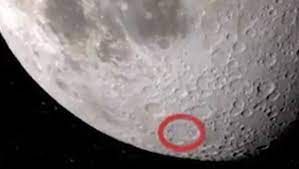Will There Soon Be Roads on the Moon? What is Known
The hostile environment of the moon, which lacks an atmosphere, water, and experiences abrupt temperature variations, makes building a lunar colony difficult. Lunar dust is a serious issue since it ruins clothing, clogs equipment, interferes with instrumentation, and makes it difficult to move about. “Building roads on the moon, you might wonder why it’s necessary,” Prof. Jens Günster, co-author of a paper from the Federal Institute of Materials Research and Testing in Berlin, said in an interview, adding that it’s an urgent necessity even from the early stages. Due to the lunar surface’s extreme instability, lack of an atmosphere, and negligible gravitational pull, dust may be found almost everywhere. Nobody wants another spacecraft’s dust to get on theirs.
Previous missions have encountered issues with the dust, as shown in the damage the Surveyor 3 spacecraft sustained from dust during the Apollo 12 landing. Addressing this problem is a top concern for NASA, particularly as they try to establish a permanent lunar colony. Innovative methods are required to overcome this difficulty since it would be prohibitively expensive to transfer building supplies to the moon.
This technical development reportedly has a great worth. For moon rovers, moondust may cause issues that result in breakdowns and shutdowns. This problem results from the lack of lunar gravity, which permits small dust particles to remain suspended. Finding a cost-effective solution would be quite advantageous for NASA.
In a recent study, researchers looked at the possibility of solidifying lunar soil using lasers. Through their efforts, they were able to effectively melt lunar dust into a solid state. The best outcomes were achieved using a 45-millimeter laser, which produced hollow triangular objects with a dimension of around 250 millimeters.
For the purpose of building sturdy surfaces for lunar roadways and landing pads, researchers advise linking these parts. Transported from Earth, a 2.37 square meter lens could effectively create the material on the moon without the need for a laser using only very little equipment. The journal Scientific Reports has published the findings.
European Space Agency lunar soil replacement was utilized in trials by researchers at Aalen University in Germany. They used a carbon dioxide laser to liquefy an alternative to clay as they looked into how solar radiation may turn lunar dust into a solid substance.
The trials were conducted on Earth, and the researchers contend that their findings show the technology’s potential for use on the Moon. They emphasized the need for further process improvement.







